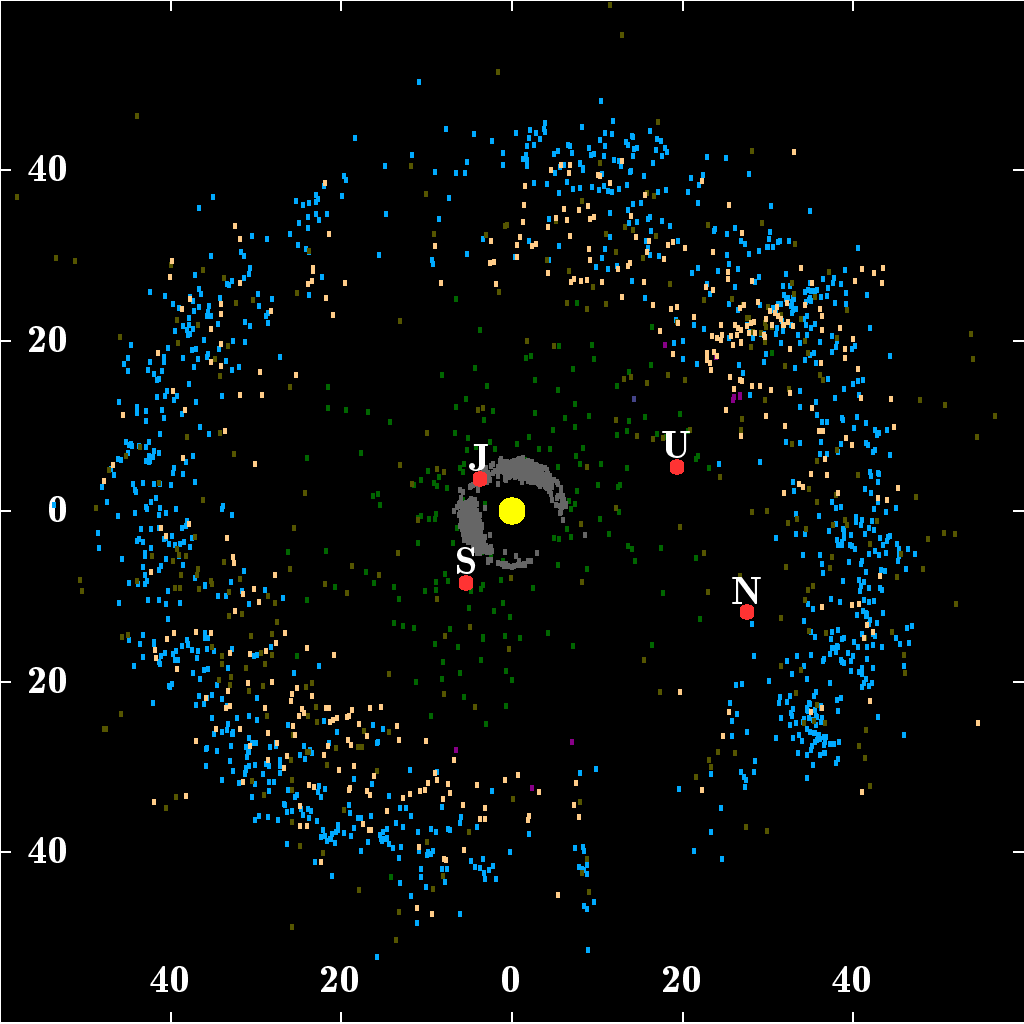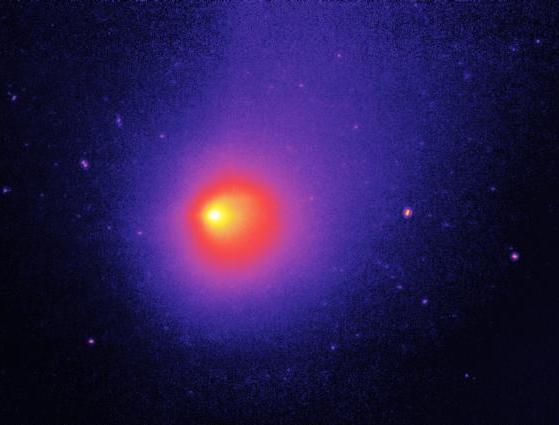A "magnifying glass" look at one of the largest known centaurs
Thanks to a stellar occultation, astronomers were able to observe and determine the characteristics of 2002 GZ32, a centaur with a diameter of almost 400 kilometers on its major axis. Known for more than forty years, we have little information about this group of icy objects orbiting the Sun between the orbits of Jupiter and Neptune
In the icy regions of the Solar System, between Jupiter and Neptune, there is a population of objects known as centaurs, which share characteristics with both comets and asteroids. They are icy, small, low-brightness objects, so their study is extremely complex and our knowledge of them is still scarce. Now, an international study led by researchers at the Institute of Astrophysics of Andalusia (IAA-CSIC) has determined the physical characteristics of 2002 GZ32, one of the largest known centaurs.
The researchers used the method of stellar occultations, which consists of predicting and observing the passage of these objects in front of the background stars. A kind of small eclipse that allows us to determine, with a precision comparable to that of a space mission, the size, shape, surface reflectivity and even the density or presence of satellites or rings around these dark and elusive objects.

"It is difficult to predict when one of these objects will occult a star, and to observe it from a sufficient number of telescopes (at least three, and far enough apart). This technique has allowed us to make surprising discoveries in the past. For example, until just a few years ago we only knew about the existence of rings around giant planets, and our team discovered that dwarf planets, such as Haumea, or centaurs, such as Chariklo, can have dense rings, which implies that rings may be more common structures than previously thought, at least in the outermost regions of the Solar System," says Pablo Santos-Sanz, a researcher at the Institute of Astrophysics of Andalusia(IAA-CSIC) who heads the study.
Thanks to the data obtained from this occultation, the researchers have not been able to find any rings around 2002 GZ32, although they do not rule out the possibility that there may be thin rings or rings made of very transparent material. They also have found that it is an elongated object. "This surprised us. Also, the three-dimensional shape we get is not compatible with the object being in hydrostatic equilibrium, something that might be much more common than we think for these outer Solar System bodies, such as centaurs and transneptunians. We already observed this for the dwarf planet Haumea with an occultation. This lack of hydrostatic equilibrium makes it necessary to revise the definition of a dwarf planet," says Pablo Santos-Sanz (IAA-CSIC).
STILL UNKNOWN OBJECTS
Due to their large distances from the Sun, centaurs are, together with trans-Neptunian objects, the least evolved and therefore most pristine bodies in the Solar System. "This means that they have retained information about the materials and physical conditions of the early solar nebula, so they reveal important clues about the origin and evolution of the Solar System from its early stages; we can consider them as a kind of time capsule," says Pablo Santos-Sanz (IAA-CSIC).
Of the known objects catalogued as centaurs, about thirty have a coma, or a central diffuse spot similar to that of comets, and two of them are classified as both asteroids and comets.
Centaurs are so poorly known that their numbers are unknown (they could range from several thousand to several million with over a kilometre in diameter). They are believed to be the progenitors of short-period comets, which complete their orbit around the Sun in less than two hundred years, such as Halley, and possibly escaped from a special population of trans-Neptunian objects known as scattered disc objects.

P. Santos-Sanz et al. "The 2017 May 20 stellar occultation by the elongated centaur (95626) 2002 GZ32". Monthly Notices of the Astronomical Society, Volume 501, Issue 4, March 2021, Pages 6062–6075, https://doi.org/10.1093/mnras/staa3881
Instituto de Astrofísica de Andalucía (IAA-CSIC)
Unidad de Divulgación y Comunicación
Silbia López de Lacalle - sll[arroba]iaa.es - 958230676
https://www.iaa.csic.es
https://divulgacion.iaa.csic.es

